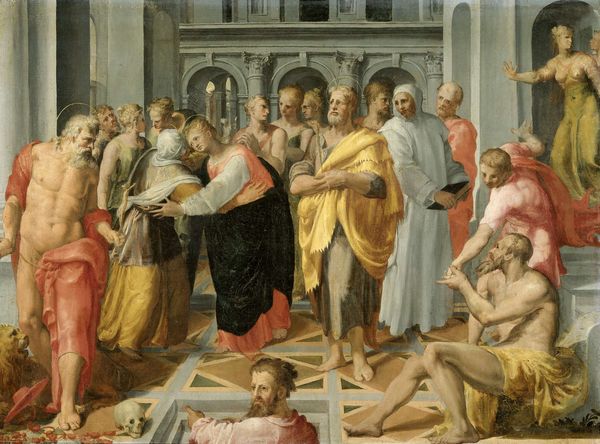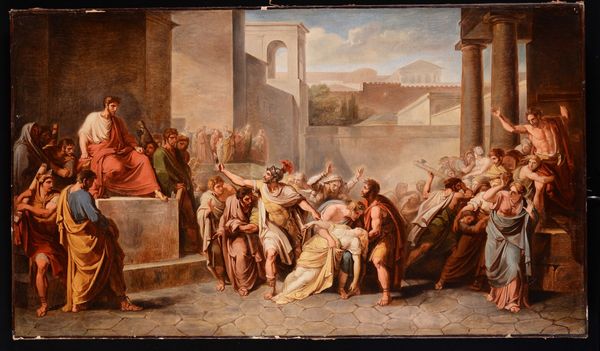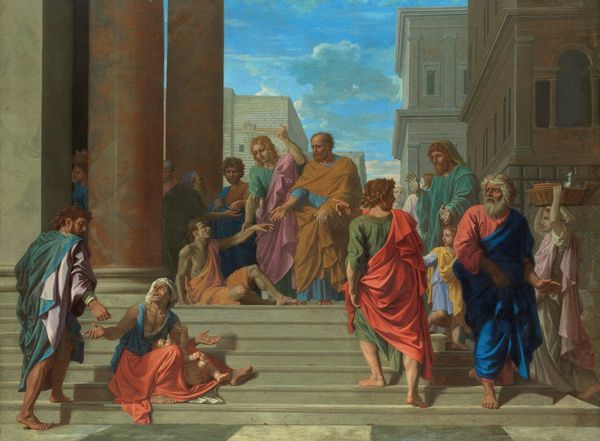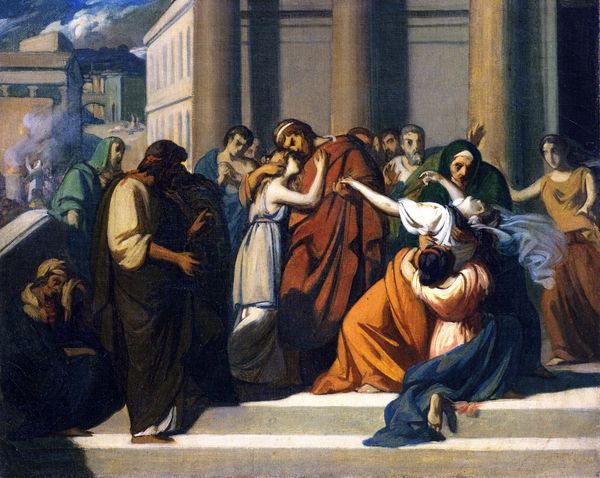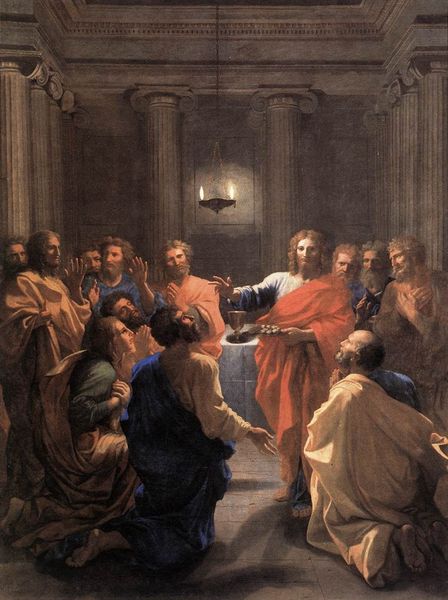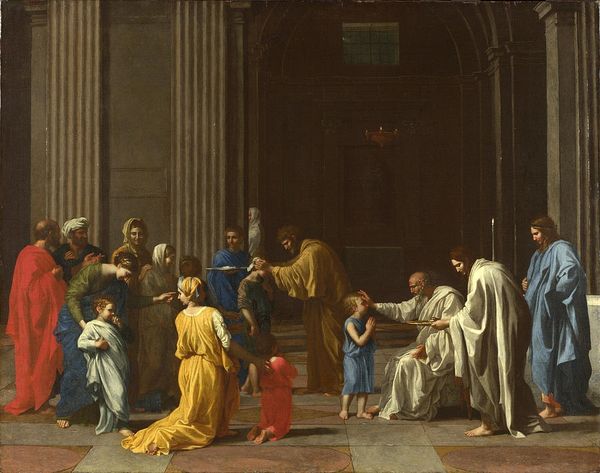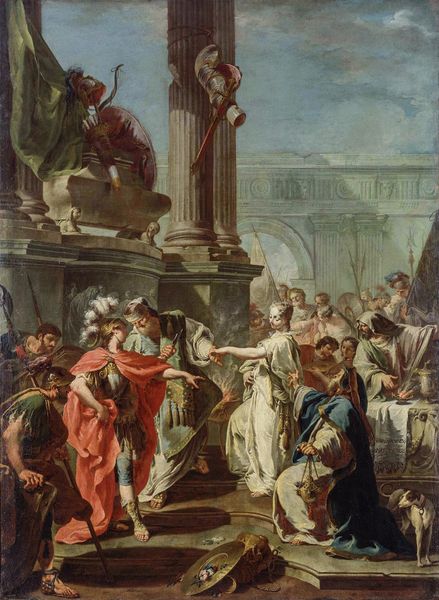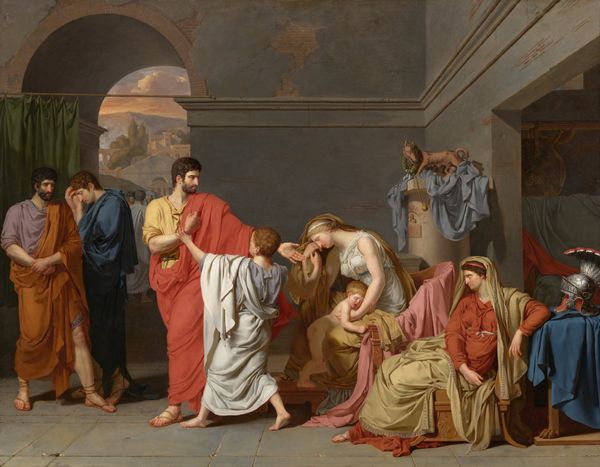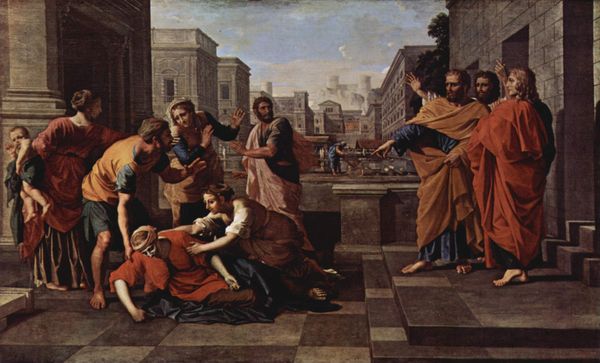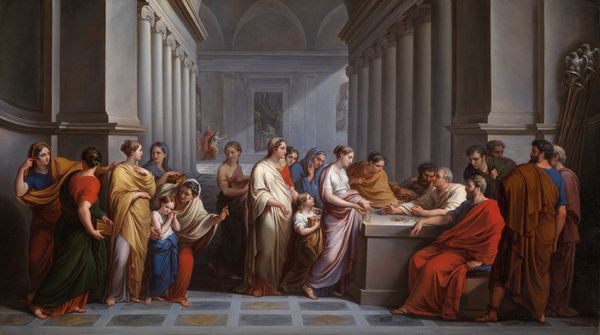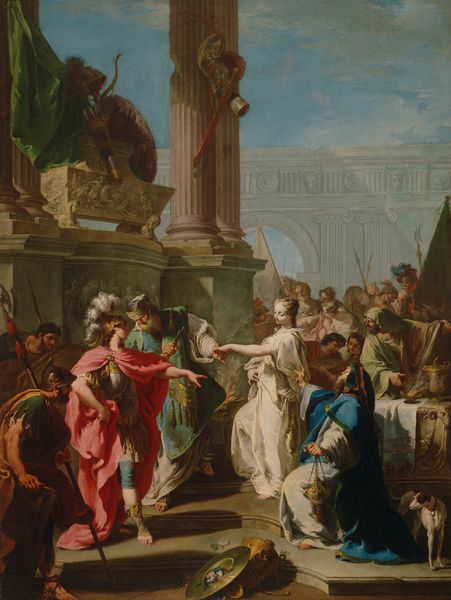
painting, oil-paint
#
narrative-art
#
baroque
#
painting
#
oil-paint
#
painted
#
oil painting
#
christianity
#
history-painting
#
academic-art
#
christ
Dimensions: 394 x 329 cm
Copyright: Public domain
Eustache Le Sueur painted "The Preaching of St. Paul at Ephesus" in the mid-17th century. At the forefront, a bonfire rages, consuming books of pagan magic, as Saint Paul, draped in red, commands attention. This act of burning books is a potent symbol, resonating across time. We see echoes of this in Savonarola's "Bonfire of the Vanities" in Renaissance Florence, and chillingly, in the Nazi book burnings of the 1930s. Fire, a primal force, represents purification but also destruction, the act of discarding old beliefs for new. The raised hand of St. Paul, a gesture of authority, reminds us of similar poses in ancient Roman oratory, signaling power and conviction. But consider how the meaning shifts. In one context, it’s religious revelation; in another, political command. These gestures, deeply ingrained in our collective memory, engage us on a subconscious level, tapping into primal emotions of faith, fear, and the desire for change. The symbol resurfaces, ever transformed, in the theater of human history.
Comments
No comments
Be the first to comment and join the conversation on the ultimate creative platform.


